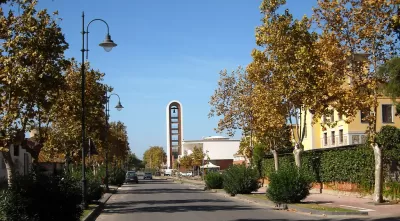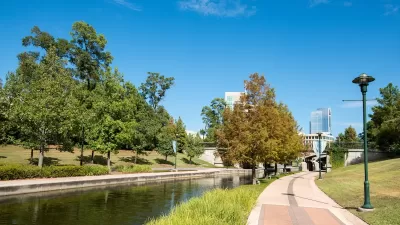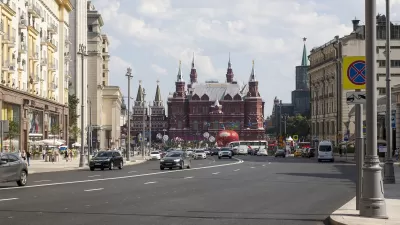Founded in 1928, the fascist new town of Arborea (formerly known as Mussolinia) still shows hints of the divergence between the traditional towns of Sardinia and the modernist leanings of its founders.

Writing in Wallpaper, Owen Hatherley accompanies Oliviero Olivieri's photographic exploration of the Sardinian town of Arborea—a 'fascist new town' established on drained marshland in a process, he describes as a "clear colonisation within the Kingdom of Italy itself, where Sardinia was always somewhat apart, linguistically and culturally." The town's straight roads and unusual vernacular cue the visitor to the separate planning processes that helped to form Arborea. It was the first of multiple fascist new towns created in the first half of the 20th century throughout Italy.
You notice something is different when you drive from the nearest railway station, at Marrubiu, to the new town: suddenly the roads are rigidly straight, running alongside canals in rich arable land, in the shadow of harsh, bare mountain ranges.
...
The architect of Mussolinia, between 1928 and 1939, was Giovanni Battista Ceas, a critic and historian as well as a designer. Accordingly, there’s very little trace in the first clutch of buildings of the more modernising trends in Fascist Italy, such as the monumental dreams of Futurist architects like Antonio Sant’Elia or the cold rationalism of Giuseppe Terragni. A hospital, a school, a town hall and a police station are in an invented vernacular bearing little resemblance to Sardinian architecture.
FULL STORY: Planned vision: Arborea offers up clues to its architecturally ambitious past as Mussolinia

Alabama: Trump Terminates Settlements for Black Communities Harmed By Raw Sewage
Trump deemed the landmark civil rights agreement “illegal DEI and environmental justice policy.”

Planetizen Federal Action Tracker
A weekly monitor of how Trump’s orders and actions are impacting planners and planning in America.

The 120 Year Old Tiny Home Villages That Sheltered San Francisco’s Earthquake Refugees
More than a century ago, San Francisco mobilized to house thousands of residents displaced by the 1906 earthquake. Could their strategy offer a model for the present?

In Both Crashes and Crime, Public Transportation is Far Safer than Driving
Contrary to popular assumptions, public transportation has far lower crash and crime rates than automobile travel. For safer communities, improve and encourage transit travel.

Report: Zoning Reforms Should Complement Nashville’s Ambitious Transit Plan
Without reform, restrictive zoning codes will limit the impact of the city’s planned transit expansion and could exclude some of the residents who depend on transit the most.

Judge Orders Release of Frozen IRA, IIJA Funding
The decision is a victory for environmental groups who charged that freezing funds for critical infrastructure and disaster response programs caused “real and irreparable harm” to communities.
Urban Design for Planners 1: Software Tools
This six-course series explores essential urban design concepts using open source software and equips planners with the tools they need to participate fully in the urban design process.
Planning for Universal Design
Learn the tools for implementing Universal Design in planning regulations.
Clanton & Associates, Inc.
Jessamine County Fiscal Court
Institute for Housing and Urban Development Studies (IHS)
City of Grandview
Harvard GSD Executive Education
Toledo-Lucas County Plan Commissions
Salt Lake City
NYU Wagner Graduate School of Public Service





























